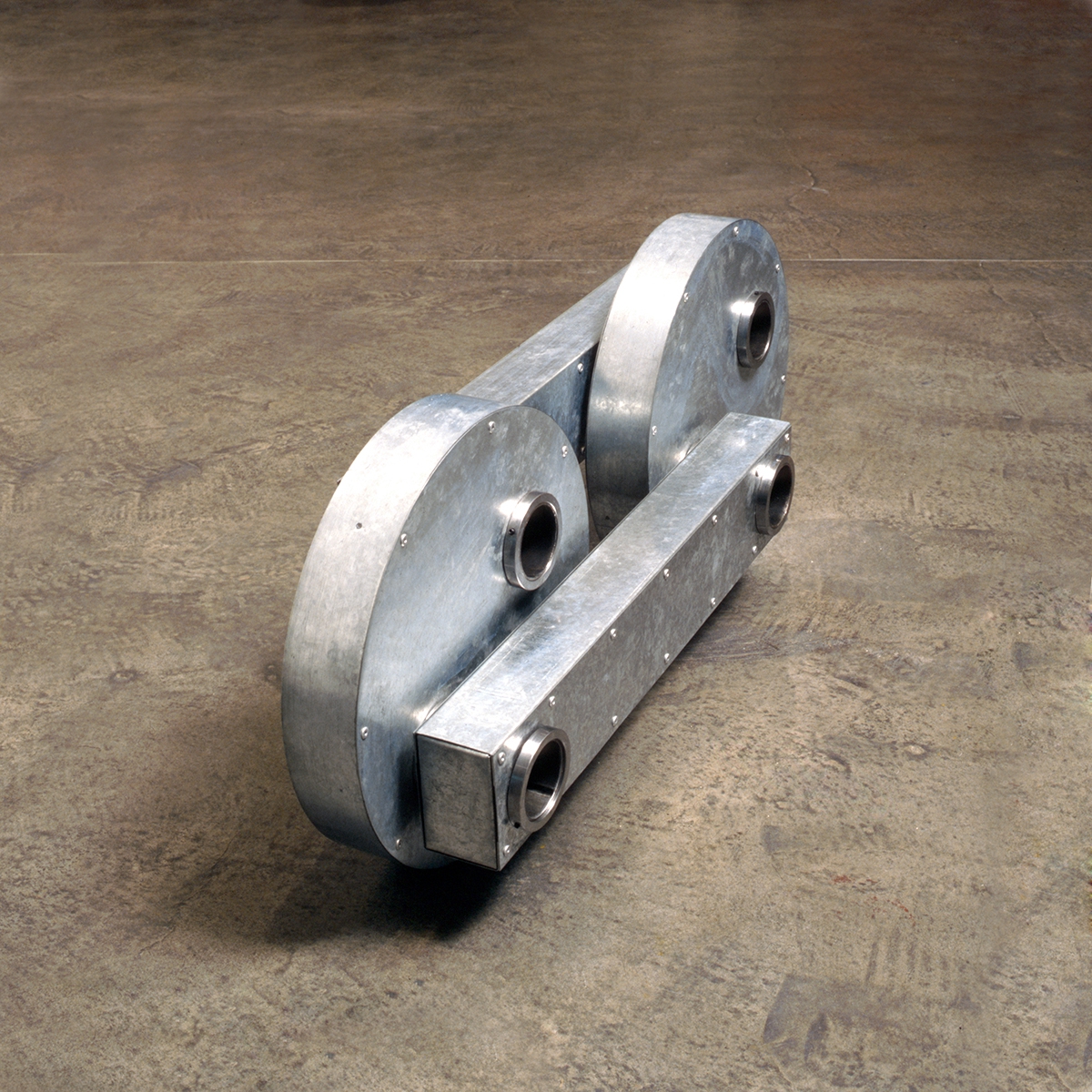The secret track of thought
In 1988, for the Studio Marconi gallery in Milan, Cavenago developed the first appearance of Voglia di treno, in a reduced scale that concentrated and distilled the imagery of the large sculpture of the following year. It is not a simple model, but an autonomous organism, capable of condensing into the miniature the tension between mechanics and vision, between play and design.
The form alludes to the steam locomotive, with its cylinders and wheels, but the reduction in size brings out its intimate, almost childlike side, as if it were a steel toy, a model capable of evoking possible and at the same time impossible journeys. Here the train does not run, but remains desire in its pure state, a restrained impulse translated into sculpture.
It is in this ambiguity - machine and surrogate, architecture and toy - that the work acquires its strength. An international critic at the time called it a 'playful surrogate' (1989), capturing the paradox of an object that evokes power and progress without ever really getting going.
In its compact size, Voglia di treno becomes a fragment of compressed modernity, a small poetic engine that holds the dream of movement, as if the entire energy of a journey were trapped in an object that relies only on the gaze to fulfil itself.

Social
Contatti
umberto@cavenago.info